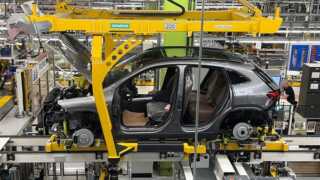Share via: Magnets, central to electric vehicles, wind energy and modern electronics, have become a strategic choke point. The rare earth magnet crisis had given the Indian auto industry sleepless nights, as the domestic auto sector faced a severe disruption owing to the shortage of rare earth elements. (REUTERS) Get Launch Updates on Notify me India must take decisive steps to build its own rare earth magnet ecosystem if it wants to avoid fresh shocks in global supply chains, SIAM President Shailesh Chandra said. His comments come as the government considers incentives for the production of rare earth minerals and magnets, following restrictions imposed by China that have unsettled industries worldwide. Magnets, central to electric vehicles, wind energy and modern electronics, have become a strategic choke point. Chandra admitted that the situation has escalated to the point where companies are struggling to keep operations smooth. Also Read : Exports are the next engine for Indian automotive sector: Nitin Gadkari Automakers are now dealing with erratic shortages, with little leeway for error. He pointed out that conversations have begun on developing a rare earth magnet ecosystem in India, but warned that the window of opportunity is narrow. India, he argued, has to move with urgency if it wants to reduce dependence and use its natural advantages. Industry at an inflexion pointChandra placed the debate in a larger context. The Indian automotive industry, he said, stands at a crucial inflexion point. Exports are at record highs, localisation is improving, and companies are preparing for future technologies. However, despite these gains the Indian auto market still has a relatively smaller pie in the global market, leaving significant scope for growth, both in volume and in value. Expanding exports, he underlined, must now be treated as a strategic imperative if India is to integrate more deeply into global value chains. Policy comfort, execution challengeGovernment policy has provided a cushion in recent years. Schemes like the Production Linked Incentive have stimulated investment and instilled confidence in companies during trying times. Nevertheless, Chandra said that this momentum cannot be assumed. Also Read : Two and three-wheelers drive Indian auto sales as passenger vehicles remain flat The next phase demands sharper execution, developing cutting-edge manufacturing that is at par with international standards, accelerating investments in R&D for cleaner cars, and developing supplier ecosystems that can compete not just on cost but also on quality and reliability. The rare earth testPolicy support has created a foundation, but the lack of a rare earth magnet base is a gap India cannot ignore. Without local capacity, supply chains will remain exposed to geopolitical shifts outside its control. For the auto industry, already managing the dual transitions of electrification and localisation, this may well be the next defining test. How India responds now will decide whether it stays a peripheral player in global mobility or begins to move towards the centre. Get insights into Upcoming Cars In India, Electric Vehicles, Upcoming Bikes in India and cutting-edge technology transforming the automotive landscape. First Published Date: 14 Sept 2025, 08:00 am IST
Source: hindustantimes.com






